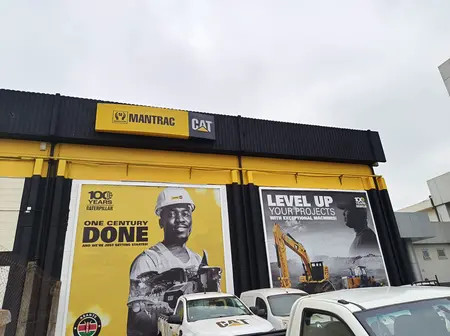A century is a long time for any brand to remain relevant, but Caterpillar has done more than survive in Kenya. It has shaped the landscape—literally. From rugged bulldozers carving roads to generators powering industries, Caterpillar’s equipment has become a fixture in construction, agriculture, and infrastructure projects across the country.
This milestone is not just about machines; it’s about the network that supports them. For decades, Mantrac Kenya has served as Caterpillar’s local partner, ensuring that every engine, excavator, and generator continues to operate at peak performance. Together, they’ve not only sold machines—they’ve sold reliability, longevity, and trust.
In a discussion with Mantrac’s leadership, one recurring theme was durability. “A customer in a rural village insisted the bulldozer had to be Caterpillar, to him, every bulldozer is Caterpillar.” The statement isn’t mere brand loyalty. It reflects decades of machines built to last, often outliving their owners’ expectations. Caterpillar machines from the 1970s still operate today, a testament to the company’s commitment to endurance.
Beyond the reputation, there is precision in every part. Caterpillar produces all its spare parts in-house. Oils, lubricants, and engine components undergo strict quality controls. For Kenyan customers, this guarantees reliability even in the country’s most remote construction sites.
Modern Caterpillar equipment in Kenya now offers features that were once considered futuristic. Operators can manage machines remotely, pre-set digging plans, or even set geofences to prevent unauthorized movement. Safety has evolved as well: height restrictions protect workers from power lines, while advanced diagnostics ensure that technicians arrive with the right parts, minimizing downtime.
Mantrac Kenya has also been proactive in combining technology with financing. Through partnerships with local banks, contractors can acquire equipment with flexible, long-term payment plans. Cooperative ownership models allow smaller farmers to access machinery without shouldering the full cost, while service agreements guarantee machines remain operational year-round.
Caterpillar’s influence isn’t confined to building sites. From small-scale agricultural projects to massive infrastructure developments, the machines support the nation’s growth. Generators power hospitals, schools, and businesses; construction equipment lays the roads that connect communities.
Meanwhile, the company has taken deliberate steps toward sustainability. Diesel engines meet some of the highest emission standards in the industry, and the shift toward electric engines for mining trucks signals a future-conscious approach. Solar and biofuel solutions complement this strategy, addressing both energy access and environmental concerns.
Caterpillar and Mantrac Kenya understand that their footprint extends beyond equipment. Corporate social responsibility projects include funding classrooms, sponsoring engineering students at JKUAT and at the University of Nairobi, and running internship programs that feed directly into local employment opportunities. “CSR isn’t just a policy; it’s part of our mission,” said Mohammed Ibrahim, Managing Director at Mantrac Kenya.
This holistic approach—where machines, financing, and community engagement intersect—has cemented Caterpillar’s position in Kenya. It’s a presence defined not only by the steel of bulldozers and engines but by the human impact of sustained, thoughtful investment.
As Caterpillar celebrates 100 years in Kenya, the partnership with Mantrac remains central. Together, they are not just providing equipment—they are setting standards, teaching best practices, and ensuring that the country’s infrastructure grows alongside its workforce’s skills.
A century is significant, but for Caterpillar and Mantrac, it’s also a reminder: the next hundred years are an opportunity to innovate, empower, and continue shaping Kenya’s landscape—both physically and economically.

Leave a Reply